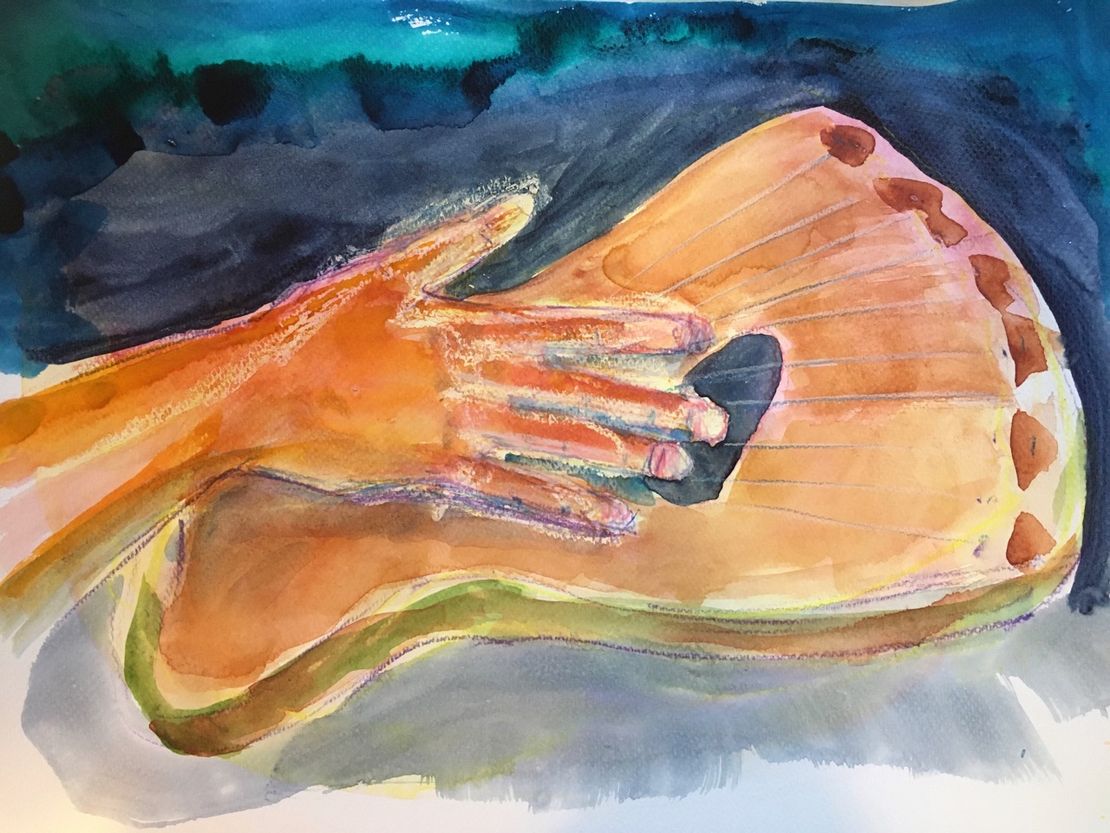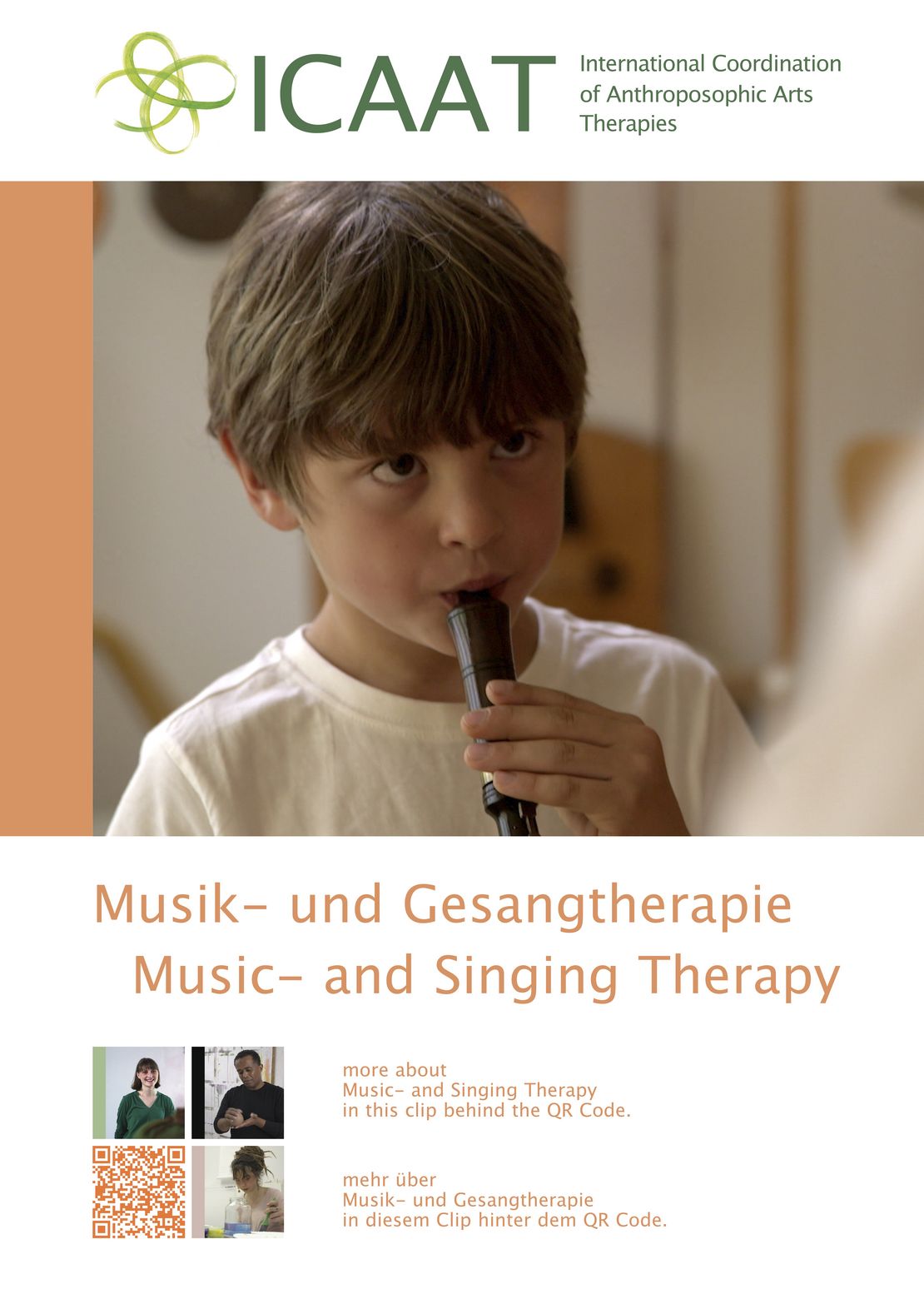Therapies – Music
Anthroposophical music therapy is one of the art therapies of anthroposophical medicine, alongside therapeutic speech formation, therapeutic painting, drawing and plasticizing. It is based on an expanded view of humanity and goes back to Rudolf Steiner's suggestions for a deeper experience and understanding of musical elements at the beginning of the last century. It is closely connected with the developmental impulse of the lyre as an instrument. Nevertheless, the origins of healing with music go back far into pre-Christian times.
Music therapy is used both actively and receptively. The aim is to activate the self-healing powers of the patient. By being involved in the musical process, the patient can become a co-creator of the healing process. Anthroposophical music therapy can work on all four levels of the human being and thus reach the body, life forces, soul and spirit of the human being.
Music therapy uses the human voice as well as easily playable instruments of various genres.
Music therapy can be used for almost all illnesses - except for acute psychoses and highly febrile diseases.
For example, it has a harmonising effect, promotes warming and deepening of the respiration, can be calming or invigorating, uplifting, structuring and strengthening, increases the ability to concentrate and stimulates self-perception, self-confidence and self-esteem.
There are many different professional fields for anthroposophical music therapists: in schools and kindergartens, in curative education and social therapy, in clinics, sanatoriums and rehabilitation centres, in the prison system, in addiction treatment, in prevention and health promotion, in emergency intervention, in refugee work and in independent practice.
Anthroposophical music therapy is a specialist field of anthroposophical art therapy, which is organised in the professional associations of art therapies. There is a rich literature in the form of publications and research work. Events, further education and training courses are offered worldwide.
More about the History
Therapeutic aspects
"Every illness is a musical problem, the cure a musical resolution."
Novalis
Every person is unique! Therefore, every therapy must be individually tailored to the person. Age, constitution, gender, social environment, living conditions and last but not least the specific illness are taken into account in the therapy. Therefore the following descriptions are very general and can only be rough guidelines in which direction the patient could be worked with. It is always essential that the therapist gets into a lively music-making or listening session with the patient. The aim is to stimulate developmental or healing processes, so that the limbs of the body are harmonised. Usually something new, not previously planned, is created.
Anthroposophical music therapy does not work with electronically generated sounds, as it incorporates the etheric quality of real music in its effectiveness into the therapeutic process.
Anthroposophical music therapy is given on medical prescription, but can also be carried out at the patient's request (taking into account differences between countries). The aim of therapy is to help people regain access to the cosmic forces from which they were formed and which are at work within them. The physicist Ernst Chladni has shown in his impressive studies that these forces of order are at work in the individual tones, intervals and tone sequences.
Music therapy makes targeted use of the following elements:
- Tones
- Pitch
- Sound sequences
- Intervals
- Scales
- Rhythms
- Various instruments
- The human voice
At the beginning of the treatment, the therapist prepares his music therapy diagnosis, from which he looks at the person from a humanistic point of view and combines the elements of the therapy process in such a way that one-sidedness or disease tendencies can be harmonized.
Important in the therapy is a therapeutic composition, which is created especially for the patient, in order to reach him in his current disease situation and to give him a very individual help.
The alternation between active music-making and receptive listening is essential in the therapy session. The ego activity of the patient is always addressed: He carries out his rhythm, guides his voice from the beginning to the end of a melody or finds the right rhythm in the swinging accompaniment of a song and thus contributes to his recovery. Even a patient whose state of health does not allow him to be active himself, brings up an inner activity and can thus also become a co-creator of the therapy.
More about the effectiveness of the musical elements
The effect of music therapy on the breath, not only in singing, but also in the swinging or bowing of an instrument is essential in the therapeutic process. The path from listening to active eavesdropping, eavesdropping as well as letting it have an effect are further elements in the therapy and have their source point in silence. This has a great significance which should not be underestimated.
In music therapy, the instruments or the voice always work in connection with the various musical elements of melody - harmony - rhythm as well as the targeted use of the elements described above. Not only do they bring about a release of mental tensions, an improvement in warmth, deepening of breathing, stimulation of digestive activity, harmonization of the flow of movement, soothing of the flow of movement and improvement of inner erection, but they also have an effect on the organs.
Indications
Music therapy is possible and beneficial at any age. It can be used for almost all illnesses and crises of a mental, spiritual or physical nature, such as
- In the company of pregnant women (among other things in early labour)
- For premature babies
- To give children an incarnation aid
- For developmental obstacles and disorders
- For voice initiation
- In puberty for eating disorders and other crises of adolescence
- In palliative care
- In the care of the dying
- For processing grief
- For sleep disorders
- For pain conditions
- For traumatic experiences
- In case of social behaviour disorders
- For concentration and attention disorders
- For heart and circulatory diseases
- For inflammatory diseases
- For respiratory diseases
- For digestive problems and diseases of the digestive organs
- In case of organic complaints due to functional disorders of kidney, liver, lung, spleen or bile as well as the diseases of these organs
- For carcinomas
- For chronic complaints
- In case of exhaustion and during convalescence
- For rheumatic diseases
- For anxiety disorders, obsessive-compulsive disorders, depression and other mental illnesses
- With dementia
- For diseases of the nervous system
- In curative education
- In case of profound developmental disorders, e.g. from the autistic form circle
- For epileptic diseases
- For genetic diseases
- For hearing loss and deafness
- For constitutionally caused disorders (neurasthenic or hysterical phenomena)
Contraindications:
- Acute Psychosis
- Highly febrile diseases



